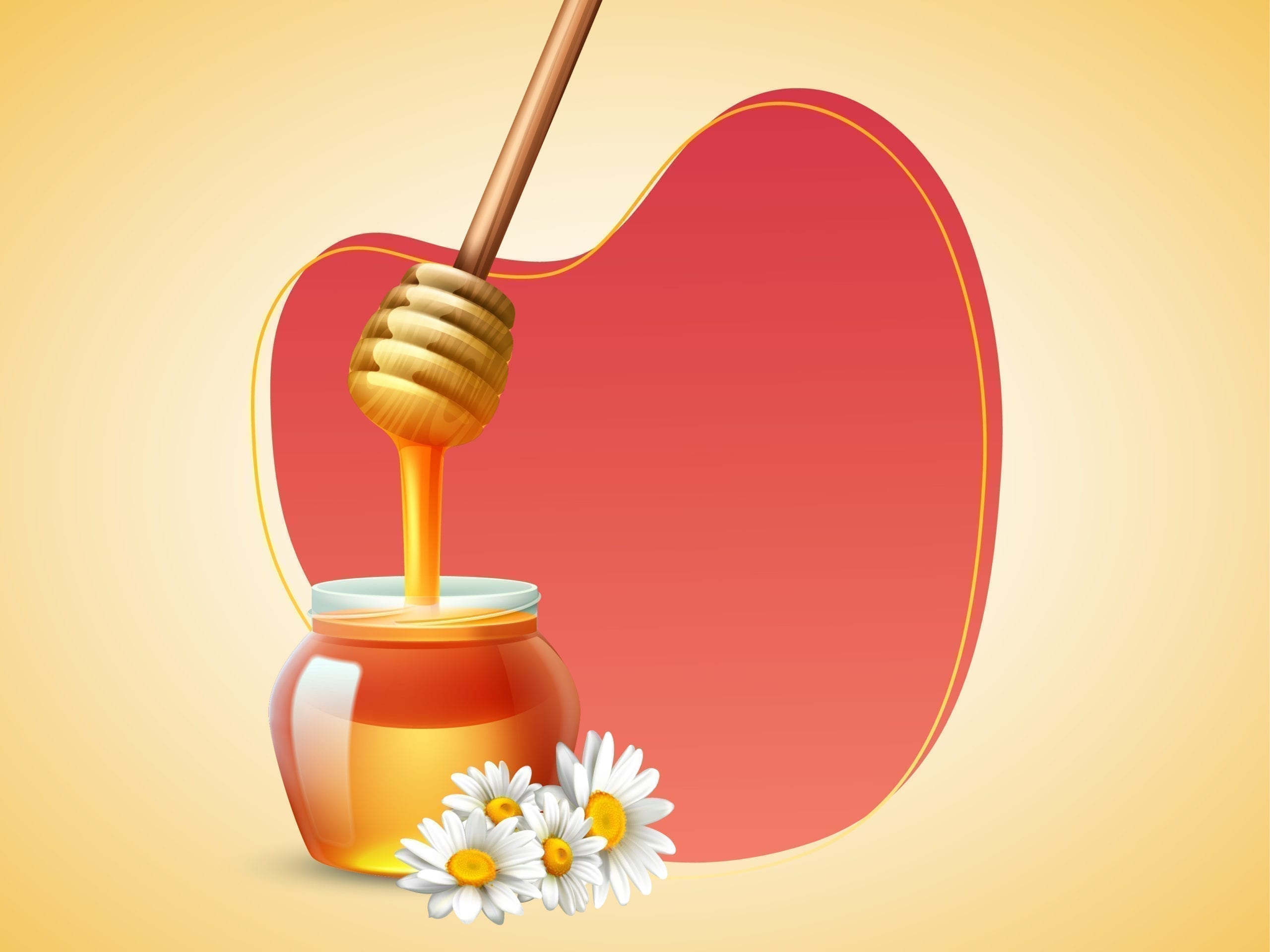We all have used honey for weight loss or applied it on our face to enhance its natural glow. Not to forget that the delicious drink of milk with honey benefits weight loss! However, there’s more to honey than just being a sweet, sticky, and golden-coloured liquid made by honeybees (Apis Mellifera) utilizing the floral nectar. While we know the amazing benefits of honey, do you know where this highly nutritious potion comes from?
From Floral Nectar To Your Kitchen – How Is Honey Made?
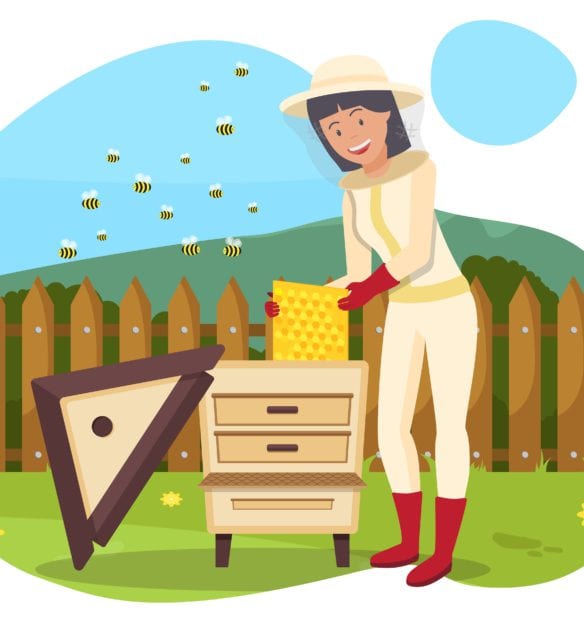
Honey bees work hard to collect nectar from different flowers. You will gawk in surprise upon learning that these small creatures visit as many as two million flowers to produce as little as half-a-litre honey. Moreover, a particular jar of honey is likely to differ in taste from the other. The reason – the flavour depends on the flowers the nectar is collected from.
“I am busy, as busy as can bee, making honey for you and me…”
These lines are quite apt when describing the journey of honey from flowers to your kitchen cabinet. The floral nectar travels a long way from millions of flowers to the beehive before becoming an elixir. So, it goes like this.
- The collector bees fetch the nectar to the beehive and deliver it to the worker bees.
- The workers then process the sweet nectar into a viscous thing and keep it safe inside the honeycomb. The honeycomb is made up of wax and comprises many hexagonal cells to provide enough storage space. Younger bees are responsible for producing wax.
- After the worker bees empty the syrupy liquid into those hexagons, they start to fan the cells with their wings until the nectar thickens and becomes stickier.
- Once the worker bees are convinced that the liquid has thickened enough and can restrict decomposition, they close the cells of honeycomb using more wax.
Different beekeepers use different methods to extract honey. Some sell it in the raw form, while some pasteurise it before bottling. Raw honey is likely to have traces of pollen, wax, and yeast. It is loaded with health benefits and deemed an effective remedy for seasonal allergies. Pasteurised honey, on the other hand, is processed to get rid of all the impurities without compromising its nutritional content as much as possible.
Honey has not popped out of the blue like any other fad we see these days. If you refer to the ancient writings, you will find that people have been using honey for 5000 years because of its medicinal and nutritional properties. The antibacterial and antiseptic properties it delivers is well known and highly regarded. Whether it’s a medical or cosmetic concern, honey might have something for you in its healing box.
A Deep Dive Into Nutritional Content Of Honey
Honey is 40% fructose, 30% glucose, and rest is water and minerals, including magnesium, calcium, iron, and potassium. So, 20 gm or 1-tablespoon of honey has 15.3 gm of carbohydrate, 0.1 g protein, and no fat (great reliever, right!).
To keep it short, you consume 58-kcals of energy when you have 20 gms of honey. Sweeter than processed sugar and double the nutritional content of it, could honey substitute table sugar in your regular drinks and recipes? Let’s find out the benefits of honey over sugar!
1. Let’s start with the percentage of fructose and glucose in honey. The fructose content of sugar and honey is 50% and 40%, respectively. And, the glucose content in sugar and honey is 50% and 30%, respectively. Moreover, honey also comprises pollen, water, and several minerals like iron, potassium, and magnesium. These add-ons make a wholesome icing over the cake.
2. The GI (glycemic index) of honey is less than sugar. What does it mean? It means that consuming honey in moderation is less likely to raise the level of sugar in your blood as quickly as sugar.
3. Plus, consuming honey instead of sugar helps with decreasing the risk factors associated with heart conditions in type-2 diabetic people. Honey is also an effective remedy for lowering the bad cholesterol and increasing the level of good cholesterol in the body.
4. As honey has some enzymes in it, it is easier to digest than sugar.
5. Although a bit higher in calories than sugar, honey, when taken in moderation, offers a world of health benefits.
Now that you know about the benefits of honey over refined sugar. Let’s take a deeper plunge into the health benefits of honey.
5 Benefits Of Honey You Probably Didn’t Know
1. Improves General Health

Often valued as an elixir, honey is full of antioxidants. The presence of flavonoids (phenolic compounds) and organic acids in honey makes it a great free-radical buster. These antioxidants are found effective in improving eye health and reducing the possibilities of strokes, heart attack, and certain types of cancer.
2. Takes Care Of Your Gut
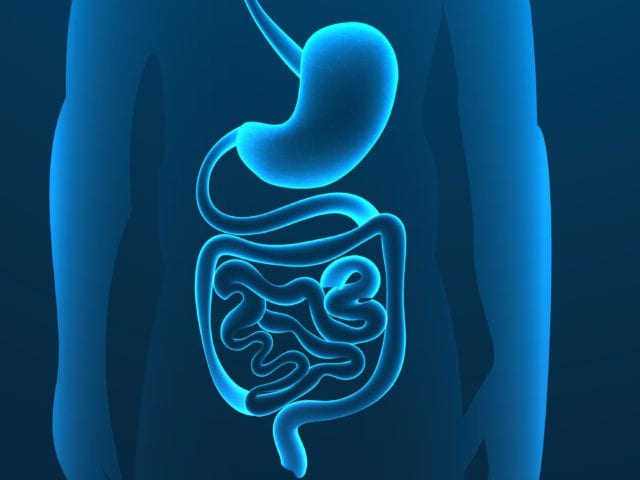
According to various researches, honey can minimise the movement of undigested food and gastric juices upward direction in the alimentary canal by lining the stomach and the oesophagus, thus relieving heartburn and acid reflux.
3. Treats Cough

If you are looking for a natural and helpful remedy for coughing, go to the kitchen and get some honey. Yes, the WHO (World Health Organization) also suggests honey cold and cough. However, it is highly advisable not to give honey to kids who are younger than one year of age.
4. Cures Diarrhea

Various research-based reviews on the health benefits of honey show that this sweet potion helps in reducing the severity and span of diarrhoea. Studies further say that honey can restrict the pathogens responsible for causing diarrhoea.
5. Heals Wounds

The topical use of honey to cure burns and wounds is quite prevalent since the ancient Egyptian era till now. Honey is also found effective in treating diabetic foot wounds and ulcers. These ulcers can sometimes become so grave that leg amputation is the only treatment left.
Studies show that Manuka Honey, honey made using the nectar of the Manuka plant (New Zealand tea tree), is very effective in healing wounds caused due to burns.
These are some of the many health benefits of honey that every one of us should know. Besides, honey is also good for your tresses and skin making it glow from within.
When just a spoonful of honey, every day, can do so much good to your body, why not make it a part of your daily diet? Besides using honey for weight loss, there are many ways honey can energise your daily diet. Let’s take a look –
5 Interesting Ways To Include Honey In Your Daily Diet
1. Make Your Salads More Interesting
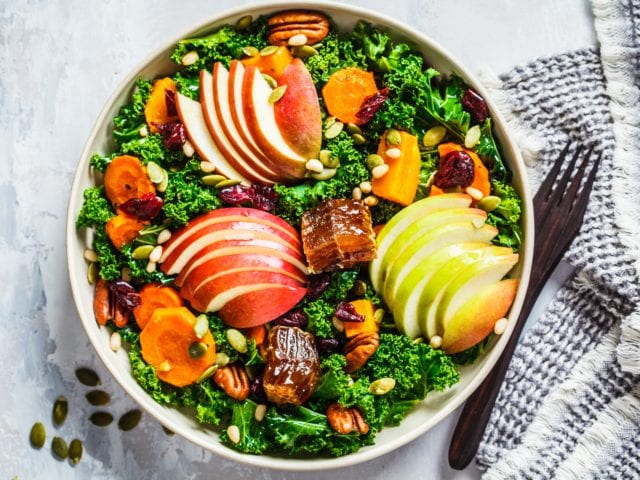
Honey makes a super-tasty dressing for salads. Plus, marinating fish and meat in honey enhances the taste to a great extent. A lot of Asian preparations use honey as a marinade. Honey, when blended with mustard, balsamic vinegar, and some salt and pepper, makes your veggies even richer and tastier.
2. Hot Water With Honey Benefits
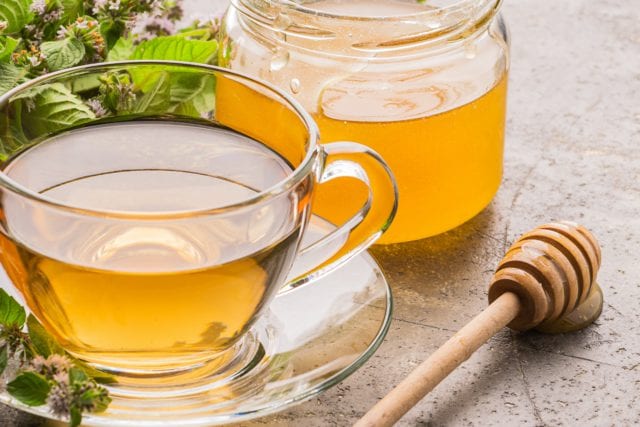
Who doesn’t know hot water with honey benefits? You already know the time and tested formula to use honey for weight loss – a glass of warm water, 1 to 2-tsp of lemon juice, and 1-teaspoon full of honey, and you are good to go. It helps in flushing out the toxins out of your body. It cleanses your stomach and keeps craving away, making your tummy feel full. Therefore, it also helps in losing weight. This concoction is loaded with nutrients and makes it one the best honey water benefits!
3. Make Honey A Part Of Your Little Tea-Breaks
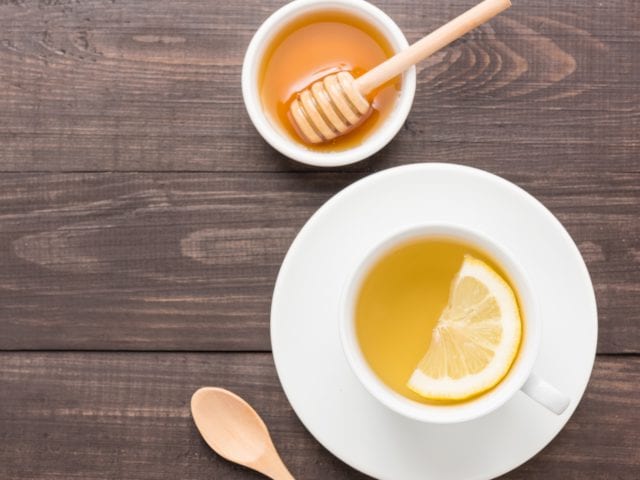
Why not replace sugar and include honey to your tea-breaks. Add a little bit of honey to your lemon tea and unfold honey lemon tea benefits. Loaded with antioxidants and other nutrients, honey oozes health with every sip.
4. Honey And Milk And You
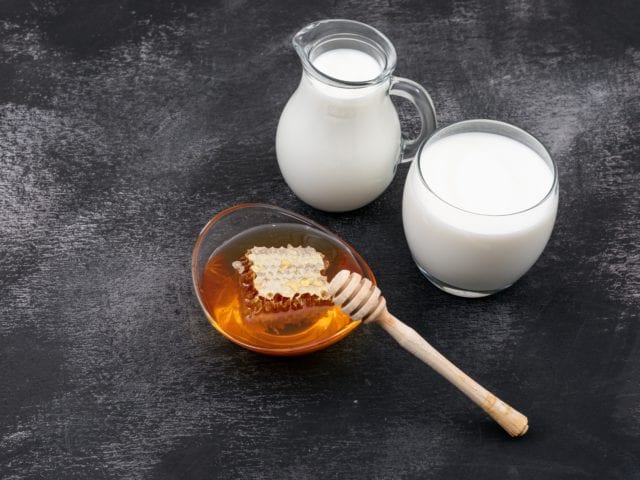
There are innumerable benefits of having milk with honey. If you get a hard time sleeping, if you think that you are almost standing on the verge of insomnia, drive a glass of warm milk with a dollop of honey at bedtime. Honey helps in producing sleep-inducing chemicals and calms you down to a night of good sleep.
5. Some Garlic And Honey, Maybe!
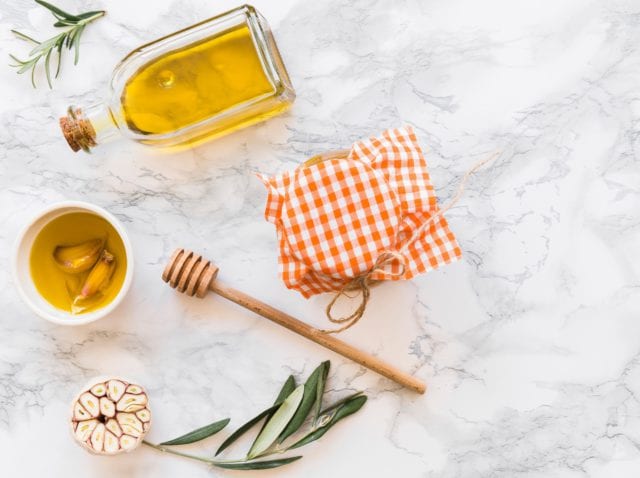
Did someone tell you to have honey and garlic for good health? Here are some garlic honey benefits for you to count on. Raw garlic and honey together can help lowering blood pressure. This combination is also found effective for fighting flu, cold and cough. It also improves digestion and boosts immunity.
6. A Beauty Hack To Bank Upon
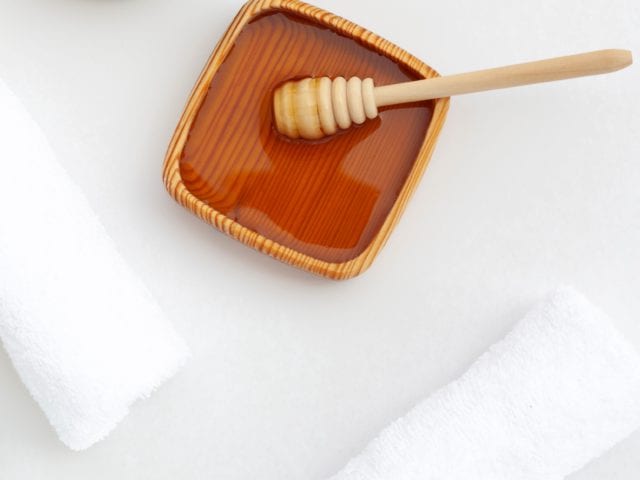
Who does not love glowing skin and luscious hair? But, spending a fortune in salons sometimes seems like an extravagance. No worries, a bottle of honey and a few beauty hacks, and you are sorted.
After learning so much about honey, perhaps you are figuring out the ways to inculcate habits that involve honey and your ‘honeys’, your darling family members.
FAQs – Frequently Asked Questions
Q. Can honey spoil or rot?
A. Honey has its anti-spoilage mechanism. Until and unless there’s no trace of water or any other liquid inside the airtight jar, your honey is going to stay. Over time, it may crystallise, or its consistency may get thick, but that’s normal, and aren’t the signs of rotting.
Q. Honey from a retail store or honey from a local beekeeper?
A. If you are looking for pure and raw honey straight from the beehive, buying it from a local beekeeper always makes sense because there is nothing filtered or added to it. However, products labelled as pure honey at a supermarket are filtered, diluted, and are likely to contain artificial sweetening agents. Honey, when filtered, loses its main ingredients like pollen and enzymes that add healing properties to honey.
Q. Is honey a bee’s poop or vomit?
A. Honey is neither poop or vomit. It’s a common misconception. Bees that collect nectar have a honey stomach in their body. It is a detachable and expandable pouch that is handed over to the worker bees once the collector bees fly back to the hive after collecting nectar. The worker bees then chew the collected floral sugar to remove some of it and deposit the remaining liquid into the beehive. Well, you can say that before depositing the nectar into the cells of the honeycomb, the worker bees regurgitate the nectar, but that’s not their vomit.

